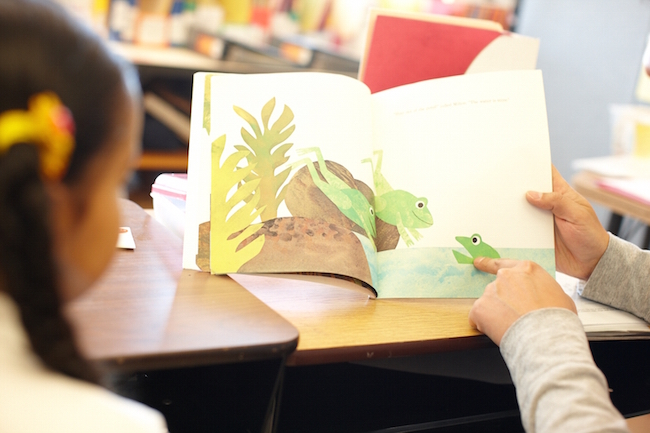“The surface normal planes at the point and in the principal directions are perpendicular to one another, and both are perpendicular to the surface tangent plane at the point” (Wolfram Mathworld, Principal Radius of Curvature).
While you can certainly read each of the words in those two sentences, it is probably much more difficult to explain what they mean (unless you are a mathematician). Reading without meaning not only lacks purpose, it can also be frustrating for the reader. Imagine reading 20 pages of text like the example above – you’d probably be discouraged and lose interest pretty quickly.
That’s why both “learning to read” and “reading for meaning” are fundamental stepping stones for emerging readers.
What does it mean to “read for meaning?”
“Reading for meaning” means students focus on discussing and understanding what they are reading, not just pronouncing the words correctly. Adults can help kids “read for meaning” by asking two main types of questions – literal and inferential.
About literal questions.
-
Literal questions focus on the who, what, where, and when of the text.
-
Readers can find the answers to literal questions in the words and pictures of the text.
-
Literal questions do not leave room for interpretation.
-
Being able to answer literal questions is essential for understanding any text, whether fiction or nonfiction.
For example, when reading The Very Hungry Caterpillar, you may ask a child, “What did the caterpillar turn into at the end of the story?” The reader can turn to the last page where the the Caterpillar turns into a “beautiful butterfly.” This answer is undeniably correct since it is written in the text and illustrated in the pictures.
Practice asking and answering literal questions.
Remember the first four W’s: who, what, where, and when. You can ask questions such as:
Who are the characters? Who said…<quote>? Who did…<action from book>?
What happened first? Next? Last?
Where are the characters?
When does the story take place (time of day, point in history)?
Answering these questions may not come easily to kids at first. If your child struggles to respond, encourage them to look back in the text to find the answer in the words or pictures. Students who have not yet internalized the idea of “reading for meaning” may need a little extra help answering literal questions. You can provide that support by asking literal questions more frequently while reading together. Give hints about where the answer can be found in the book and encourage your child to ask you questions too!
The Reading Partners curriculum
At Reading Partners, many of our lessons include explicit instruction on how to ask and answer literal questions about text. With the proper guidance, students learn about story structure and how to describe the characters, setting, problem, and solution in a story. When reading informational texts, students learn how to discuss the main idea and key details about the topic described in the text.
Whether a kindergarten student is reading a simple text about ‘things that are big,’ or a fourth grader is working on finding the author’s message in a folktale, it’s never too early to practice answering literal questions. These tactics will help students build their comprehension skills and become stronger readers.
Stay tuned for more information on inferential questions!












